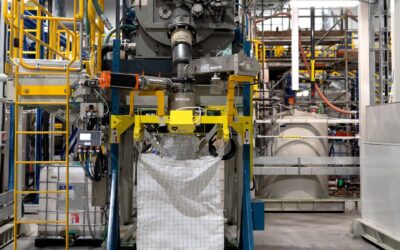This blog is the second in a series on carbon contracts for difference (CCfD) for credit prices. The previous blog laid out the case for introducing not just a headline price CCfD, but also a credit price CCfD that would bring certainty to carbon prices in Canada’s output-based pricing system.
Here, we focus in on the design of a credit-price CCfD to propose a structure that we believe will have more emissions impact and may also come with cost advantages: the federal government should structure CCfDs such that the government conditionally purchases credits — rather than simply guaranteeing their value — in order to address the root imbalance between supply and demand in carbon credits, rather than simply guaranteeing the value of those credits to address the symptom of that imbalance.
The optimal design for credit price CCfDs isn’t what you think
Here’s how a CCfD structured around a direct purchase of credits would work. Firms that sign a CCfD with the government would have the option to sell a carbon credit to the government at a fixed price. That guarantees the value of that credit. But it also increases the value of other credits in the market because the government can retire the credit it purchases, taking it out of circulation, thus addressing the root problem: an oversupply of credits. This approach is different from the alternative option being considered, in which government uses CCfDs to “top-up” the value of credits, guaranteeing their value.
Structuring CCfDs around sale of credits is actually a logical extension of existing approaches used elsewhere in Canada and around the world. It’s similar to contracts-for-differences used in Alberta, the UK, and Germany which settle the price around a transfer of an asset — in this case a credit, rather than a unit of clean hydrogen or electricity. It’s also similar to how jurisdictions with cap-and-trade systems (such as the European Union or California) use market stability mechanisms to stabilize the price of emissions credits by ramping the sale of credits up or down.
The key benefit: Greater impact on investment and emissions reductions
The biggest advantage of direct purchases is that, all else equal, they will generate more emissions reductions than alternatives. That’s because direct purchases not only guarantee the value of credits for any firm that has signed a CCfD, but they also increase the value of credits for the entire market because any credits purchased by the federal government are removed from the market. In contrast, a top-up CCfD would help only firms that hold a CCfD; credit supply remains unchanged and thus the risk of low prices would persist (and, in fact, there’s an argument to be made that top-up CCfDs actually make low credit prices more likely by incentivizing additional credit supply).
The best way to address contingent liability
Guaranteeing the price of all output-based pricing system credits in Canada through CCfDs comes with the risk of a significant fiscal cost. To be clear, this liability to the federal government is only a risk— it’s contingent on future policy decisions that the federal government controls, including changes to output-based pricing system thresholds in 2027 and beyond, offset criteria, and other policies that can interact with output-based pricing systems and affect credit markets.
The federal government has tools at its disposal to ensure it never pays out a dollar. Nevertheless, the total fiscal cost for the federal government in a downside scenario of guaranteeing the value of all credits at the benchmark price of carbon (i.e., $170 per tonne in 2030) would be high and therefore merits consideration. In this section, we argue that if the federal government is looking to contain its downside risk, direct purchases are its best option. (It’s worth noting that any credit price CCfD design makes an oversupplied market much less likely — and only an oversupplied market would trigger a payout).
Other possible solutions have been floated to lower downside costs, but at the cost of either weaker incentives for investment or emissions reductions. CCfDs on credits could, for example, only guarantee the value of credits up to value of significantly less than $170 per tonne. Or they could apply only to a subset (e.g., 20%) of credits in the market.
Both of these options, however, fail to maximize policy certainty for carbon pricing, and thus fail to solve the problem they set out to solve. In the first approach, projects requiring (certain) higher carbon prices would not move forward. In the second, fewer projects would be de-risked, essentially, creating a stratification of expected carbon prices across the economy.
Direct purchases avoid both of these pitfalls. That’s because even if direct purchases are offered to a limited number of emitters, those purchases still benefit the entire market by reducing supply.
Direct purchase CCfDs have one additional advantage over a top-up: The federal government could still recover some of their costs by selling credits into the market in future years (potentially at a profit), if the market tightens and excess supply is no longer a problem.
Less risk, more emissions reductions
Here’s the upshot: more certainty on credit prices is looking increasingly critical for mobilizing investment, and firms need that certainty now, rather than in four years. CCfDs that “top-up” the value of credits will either cost more than government purchases of credits, be less effective in driving emissions reductions and investment, or both.
Next up: how can credit price CCfDs encourage collaborative efforts between provincial, territorial, and federal governments?








